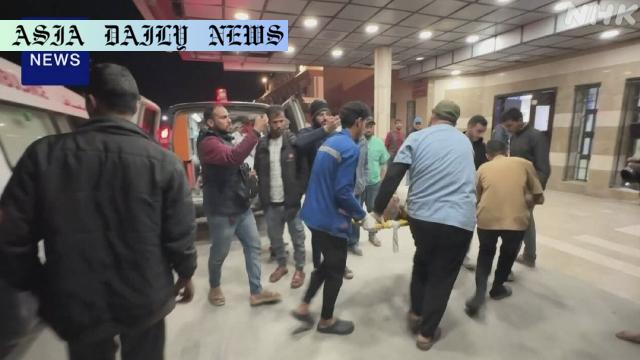Displacement: The UN reports 500,000 newly uprooted in Gaza due to Israel’s resumed military offensive and stringent restrictions.
Displacement of over 500,000 in Gaza following Israel military offensives.
UN raises concerns over lack of humanitarian aid for displaced people.
Negotiations for a ceasefire continue amidst worsening conditions.

Escalation of Conflict in Gaza
Recent escalations of conflict in Gaza have led to unprecedented levels of displacement, according to a report by the United Nations. Since the Israeli military resumed its offensive on March 18, over 500,000 people have found themselves without shelter, forced to flee from areas under attack and take refuge wherever possible. The sudden surge in displacements has strained already dwindling resources in the region, exacerbating the humanitarian crisis.
Humanitarian Crisis and the Role of the United Nations
The UN has provided troubling updates on the mounting challenges in Gaza, including acute shortages of essential supplies and an imposed block on humanitarian aid entering the region. The number of children receiving meals has dropped sharply, with over two-thirds of the previous beneficiaries no longer receiving aid. Additionally, the lack of provisional tents due to supply restrictions has left many without even the most basic form of shelter.
Developing Situations on the Ground
The Israeli offensive has reportedly secured control of roughly 30% of Gaza’s territory. This advancement has been accompanied by forced evacuations of residents, compounding the displacement toll. Among the dead are 23 individuals who sought refuge in tents, highlighting the vulnerability of those displaced amidst ongoing offensives. Footage captured by NHK shows injured civilians being carried to Khan Younis hospitals, showcasing the dire state of facility resources and personnel addressing the crisis.
Ceasefire Talks and Challenges Ahead
Amidst the grave circumstances, talks mediated between Israel and Hamas offer a glimmer of hope for a truce. However, sticking points remain contentious, particularly Israel’s demand for Hamas’ disarmament. While discussions unfold, the ground reality remains bleak for the displaced population, grappling with lack of access to food, water, and security.
Commentary
A Reflection on the Crisis
The ongoing conflict in Gaza underscores the devastating toll that political instability and military action can exact on civilians. Over 500,000 individuals have been uprooted from their homes, their lives disrupted in unimaginable ways. Each figure in this staggering statistic represents a story of loss, hardship, and uncertainty. As the world watches these events unfold, the humanitarian imperative of assisting these individuals becomes evident. These people do not just require assistance—they deserve it.
Highlighting the Role of the UN and Global Response
The United Nations’ efforts to bring global attention to the crisis and address the needs of the displaced underline the importance of a collective response. However, the impact of aid is diminished when logistical challenges such as supply bans and restricted access impede its effectiveness. Global mechanisms must ensure that lifesaving support can reach those who need it most, regardless of geopolitical tensions.
Necessity of Sustainable Solutions
While ceasefire talks offer a glimmer of hope, it is clear that sustainable solutions are needed to address the root causes of such crises. An end to violence and a focus on dialogue and reconciliation are fundamental to preventing escalations in the future. For the displaced, the priority remains immediate relief, but the long-term goal must include pathways for rehabilitation, rebuilding, and ensuring human dignity.


